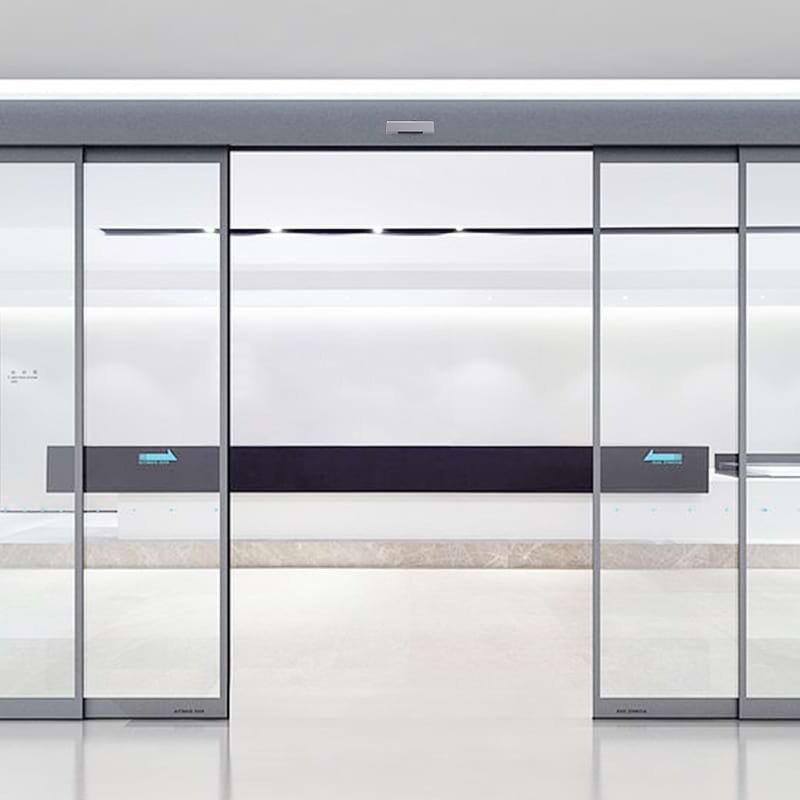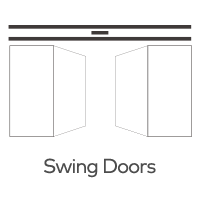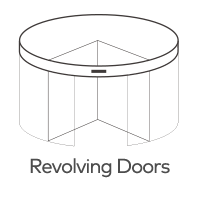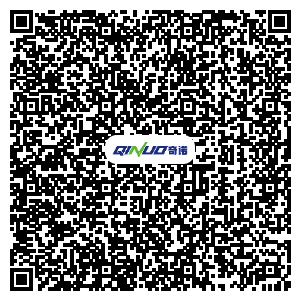Are there specific regulations or standards governing the installation and use of automated door motion detectors?
Automated door motion detectors have become an integral part of security systems in residential and commercial buildings. Their effectiveness in enhancing security and convenience is well-recognized, but their installation and use are governed by a set of regulations and standards designed to ensure safety, reliability, and privacy. Here, we explore the key regulations and standards that govern the deployment of these devices.

1. Building Codes and Accessibility Standards
One of the primary regulatory frameworks impacting automated door motion detectors is building codes. In the United States, the International Building Code (IBC) and the Americans with Disabilities Act (ADA) set forth guidelines that affect the installation of automated doors, including those equipped with motion detectors.
International Building Code (IBC): The IBC provides detailed requirements for the installation of automatic doors to ensure safety and functionality. This includes specifications on door activation methods, emergency egress, and the placement of sensors to prevent accidental entrapment or injury.
Americans with Disabilities Act (ADA): The ADA mandates that automated doors must be accessible to individuals with disabilities. This means that motion detectors must be calibrated to detect individuals using wheelchairs or other mobility devices, ensuring that doors open promptly and safely for all users.
2. Safety Standards
Safety standards are critical in the deployment of automated door motion detectors. These standards are often developed by organizations such as the American National Standards Institute (ANSI) and Underwriters Laboratories (UL).
ANSI/BHMA A156.10: This standard specifies performance criteria for power-operated pedestrian doors. It includes requirements for the installation and use of motion detectors to ensure that doors open and close safely, minimizing the risk of injury.
UL 325: This standard covers the safety of door, gate, and window operators and systems, including motion detectors. It outlines the testing procedures and safety requirements to prevent hazards such as electric shock, fire, and mechanical injury.
3. Privacy Regulations
With the integration of automated door motion detectors into broader security and surveillance systems, privacy concerns have become increasingly significant. Regulations such as the General Data Protection Regulation (GDPR) in Europe and various state laws in the U.S., like the California Consumer Privacy Act (CCPA), impose strict guidelines on how data collected by these systems is handled.
GDPR: In the European Union, the GDPR requires that any personal data collected by motion detectors (e.g., video footage) must be handled in a manner that protects individuals’ privacy. This includes obtaining explicit consent for data collection, ensuring data security, and providing individuals with access to their data.
CCPA: Similar to the GDPR, the CCPA gives California residents the right to know what personal data is being collected, how it is used, and to whom it is disclosed. Businesses must implement measures to comply with these regulations, ensuring that data from motion detectors is securely stored and managed.
4. Fire Safety Regulations
Fire safety regulations also play a crucial role in the installation of automated door motion detectors. These regulations ensure that automated doors do not hinder emergency egress and can function properly during power failures or fire alarms.
National Fire Protection Association (NFPA) 101 - Life Safety Code: This code provides guidelines for the installation of egress doors, including those with automated motion detectors. It specifies that doors must automatically unlock and open during fire alarms to facilitate safe evacuation.
NFPA 80 - Standard for Fire Doors and Other Opening Protectives: This standard covers the installation and maintenance of fire doors, ensuring that automated doors equipped with motion detectors do not compromise the fire rating of the building.
5. Industry-Specific Regulations
Certain industries have additional regulations concerning automated door motion detectors. For instance, healthcare facilities, airports, and educational institutions often have specific guidelines to address the unique security and accessibility needs of their environments.
Healthcare Facilities: Regulations may require automated doors to facilitate easy access for patients and staff while ensuring security in sensitive areas such as operating rooms and pharmacies.
Airports: The Transportation Security Administration (TSA) imposes strict security requirements for automated doors in airports to prevent unauthorized access and ensure passenger safety.
Educational Institutions: Schools and universities may have policies to ensure that automated doors enhance security while providing accessible entry points for students and staff with disabilities.
Conclusion
The installation and use of automated door motion detectors are governed by a comprehensive set of regulations and standards designed to ensure safety, accessibility, privacy, and security. Compliance with building codes, safety standards, privacy regulations, fire safety codes, and industry-specific guidelines is essential for the effective and lawful deployment of these systems. As technology evolves and new challenges emerge, these regulations and standards will likely continue to adapt, ensuring that automated door motion detectors remain a reliable and secure component of modern buildings.







